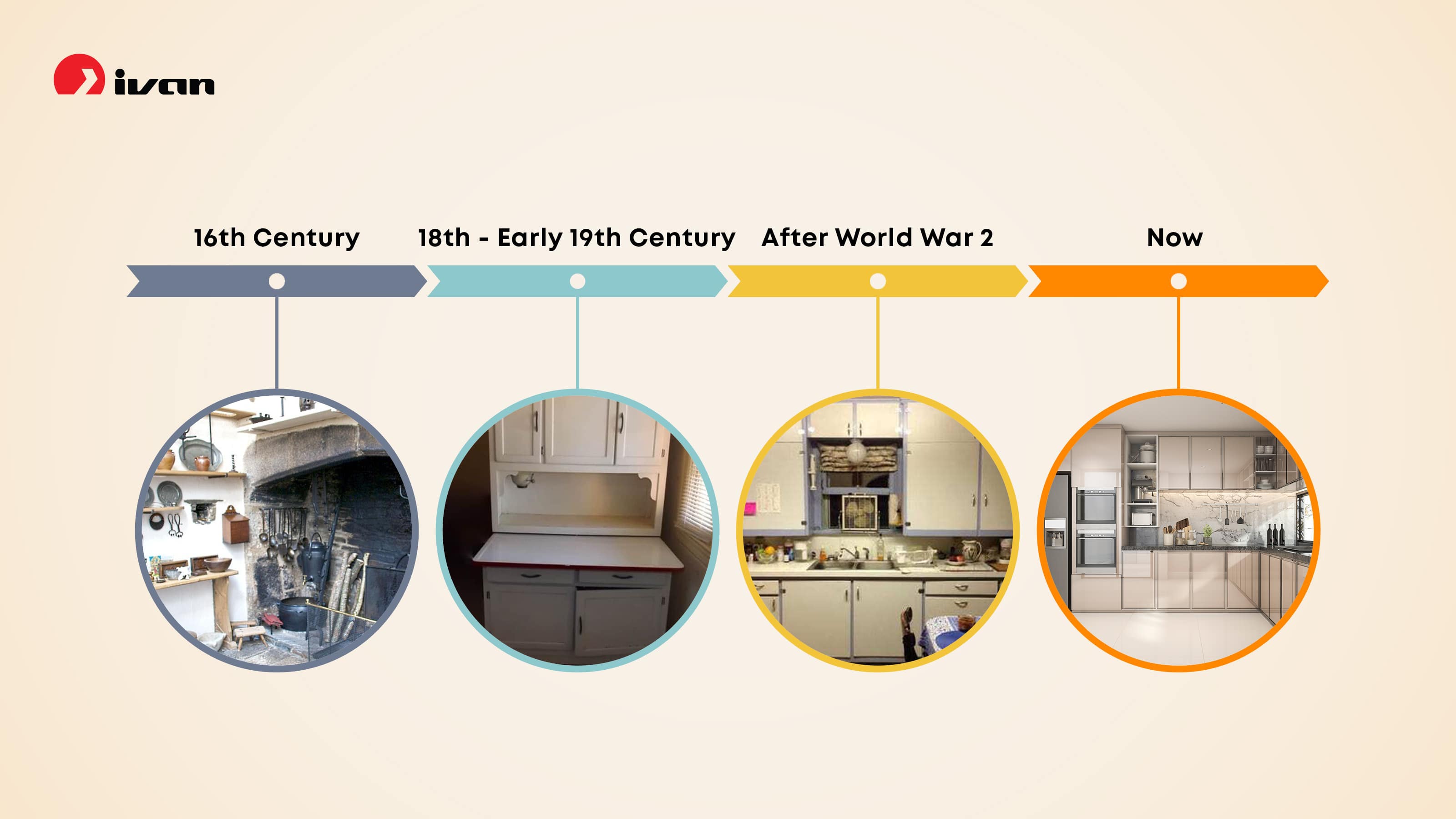
-
Back in the Middle Ages, pantries were the norm in almost every household. Typically, separate rooms off the kitchen, simple wooden-plank shelving was used to store everything from bread and cleaning supplies to freshly caught hare or game.
- It wasn’t until the 1890s where American households saw their first cabinet in the kitchen. This cabinet was a free-standing cabinet complete with little cabinets and drawers that held every day kitchen needs like sugar, flour, and utensils.
- The introduction of the electric oven becoming a staple item for Americans, the kitchen was gradually starting to evolve in the 1930s and 1940s. They start using with modular-style cabinets. Cabinets were not mounted on the wall. They were generally made of metal with tile countertops. While men were out to war, women spent their days in the kitchen making jams and other foods to sell to make ends meet.
- The post-war era brought a change in the functionality of kitchens. Cabinets were used just for more than storage. They now had pull out bins, trays, and baskets. When the war was over, there was an influx of steel. Manufacturers used that steel to make cabinets. Another huge change is that kitchens now included both upper and lower cabinets.
- In the 1970s, kitchens became an area to reflect a homeowner’s unique sense of style. The cabinets were made of solid woods like oak or of laminate.
Kitchens continue to grow in size which meant more cabinets were being placed in kitchens. Kitchen cabinets are developed with many designs, sizes as well as with different materials.